अधिक कमाई के लिए स्ट्राबेरी की खेती
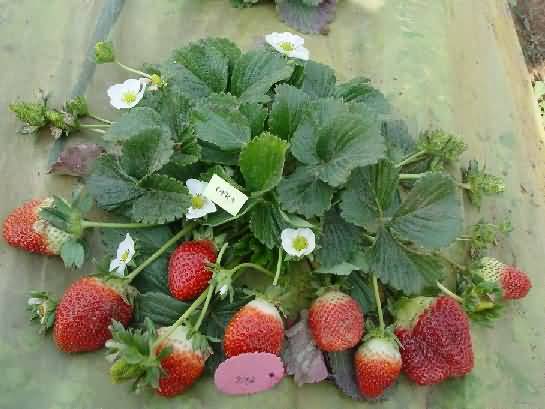
Strawberry (Fragaria x ananassa Duch.) is one of the best natural sources of antioxidant, vitamin 'C', proteins and minerals like P, K, Ca and Fe. It is also anticarcinogenic and anti diabetic. The introduction of day neutral cultivars, fertigation, green house, standardization of agro-techniques and improved storage techniques has revolutionized the strawberry industry.
Soil and climate to grow Strawberry
Strawberry prefers soil reasonably rich in humus because of 70-90 % of its roots found in the top 15 cm soil. Strawberry should not be grown continuously on the same land and on the land previously devoted to potato, tomato, eggplant, pepper and raspberry. It grows well on soil with pH 5.0-7.5. However, the plant thrives best in slightly acidic soil (pH 5.5-6.5). Soil with pH value of 4.5-5.5 needs liming.
The strawberry plants are strongly affected by the environmental parameters like temperature, photoperiod and light intensity. In cold climate, frost as well as winter injury seriously reduce yield of strawberry. Photoperiod has a marked effect on strawberry vegetative growth, plant morphology and yield.
Suitable Varieties of strawberry
Growers should grow varieties which are resistant to pests and diseases, adapted to the desired climate, remain productive over a long period, high yield and ability to retain size after the 3rd picking, good processing quality and have good runnering capacity. Most suitable varieties are Camarosa, Festival, Ofra, Sweet Charlie, Chandler, Elista, Fair Fox and Seascape.
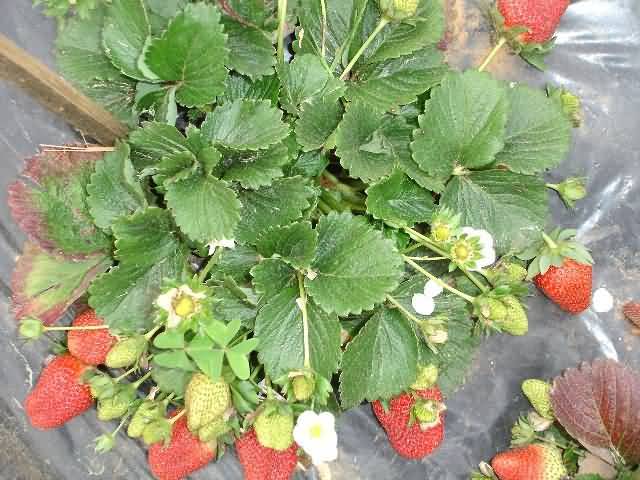
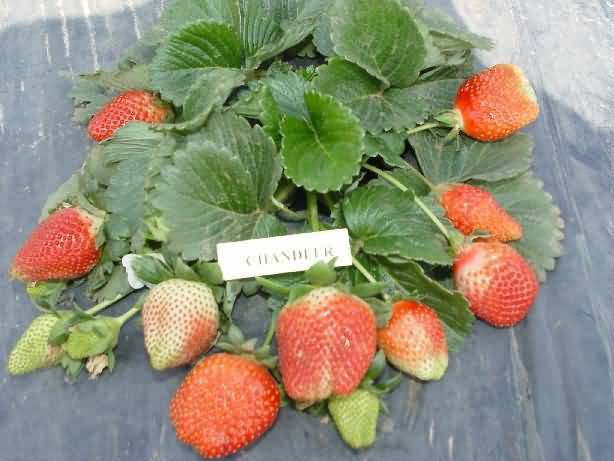

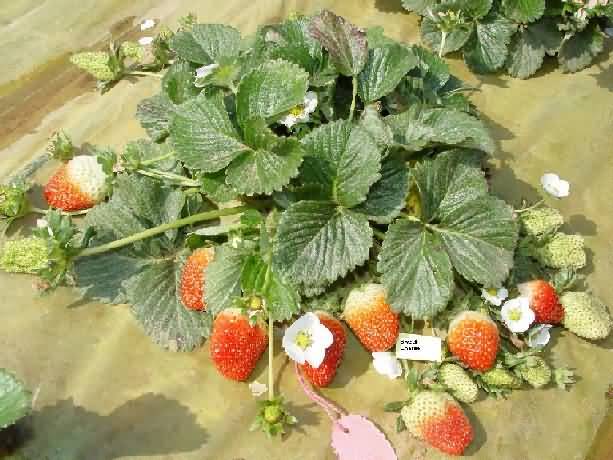
Propagation of Strawberry
Strawberry is propagated through runners, which is considered as natural vegetative propagation.
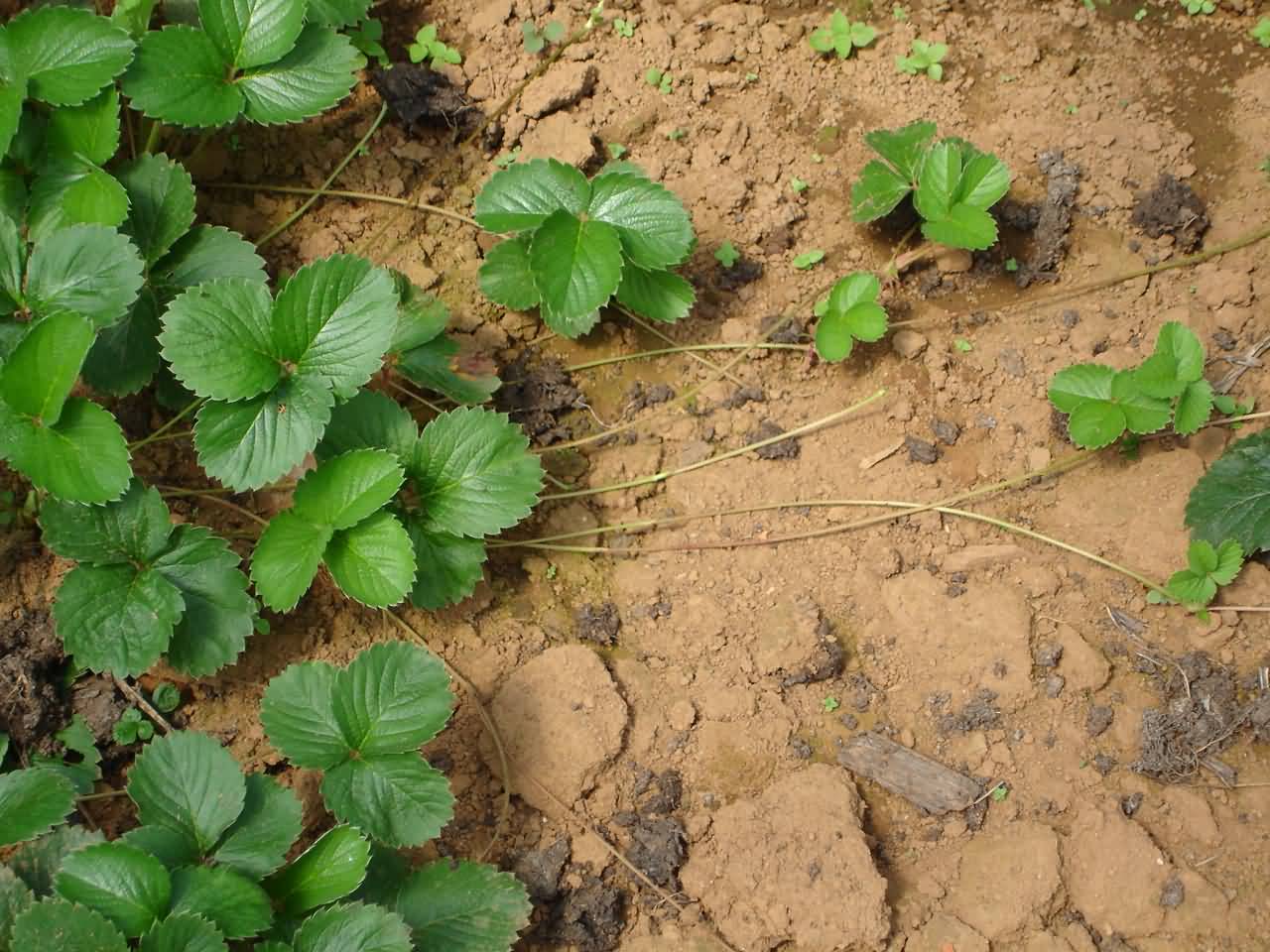 The stolon, a creeping stalk is produced in the leaf axils and grows out from the parent plant during summer. At the second node of stolon a runner plants is formed and a new stolon arises on the runner plants. Initially runner plants produce fewer roots but thereafter put forth excessive fibrous roots. When acquired sufficient growth and roots, runners are separated from the mother plant and can be planted elsewhere.
The stolon, a creeping stalk is produced in the leaf axils and grows out from the parent plant during summer. At the second node of stolon a runner plants is formed and a new stolon arises on the runner plants. Initially runner plants produce fewer roots but thereafter put forth excessive fibrous roots. When acquired sufficient growth and roots, runners are separated from the mother plant and can be planted elsewhere.
A separate bed should be used for runner production. The planting should be done at 1.2 x 1.2m or 1.8 x1.8 m distance. Usually 30-40 runners per plant are considered satisfactory rate of production. Rate of runner production can be enhanced by GA3 (50-100 ppm) spray. For greater survival and fast growth, the runners should be lifted in September and planted in poly bags using the potting media of 1 soil: 1 Sand: 2 FYM for one month.
Planting of Strawberry and Mulching
Healthy runners with a medium to large crown and well-developed root system are planted in Hill row system either in single or double rows on 15-20 cm raised beds with plant to plant and row to row distance of 30x30-45 cm and 90-120 cm is kept between twin rows. The outer leaves should be striped off and soils of the roots of the runner should be washed.
Strawberry are rather exacting about the depth at which they must be planted. If the crown is set too shallow it will dry out, and if set too deep it may be smothered. Planting during mid September to mid October is best time in open conditions which does not require much special care for establishment.
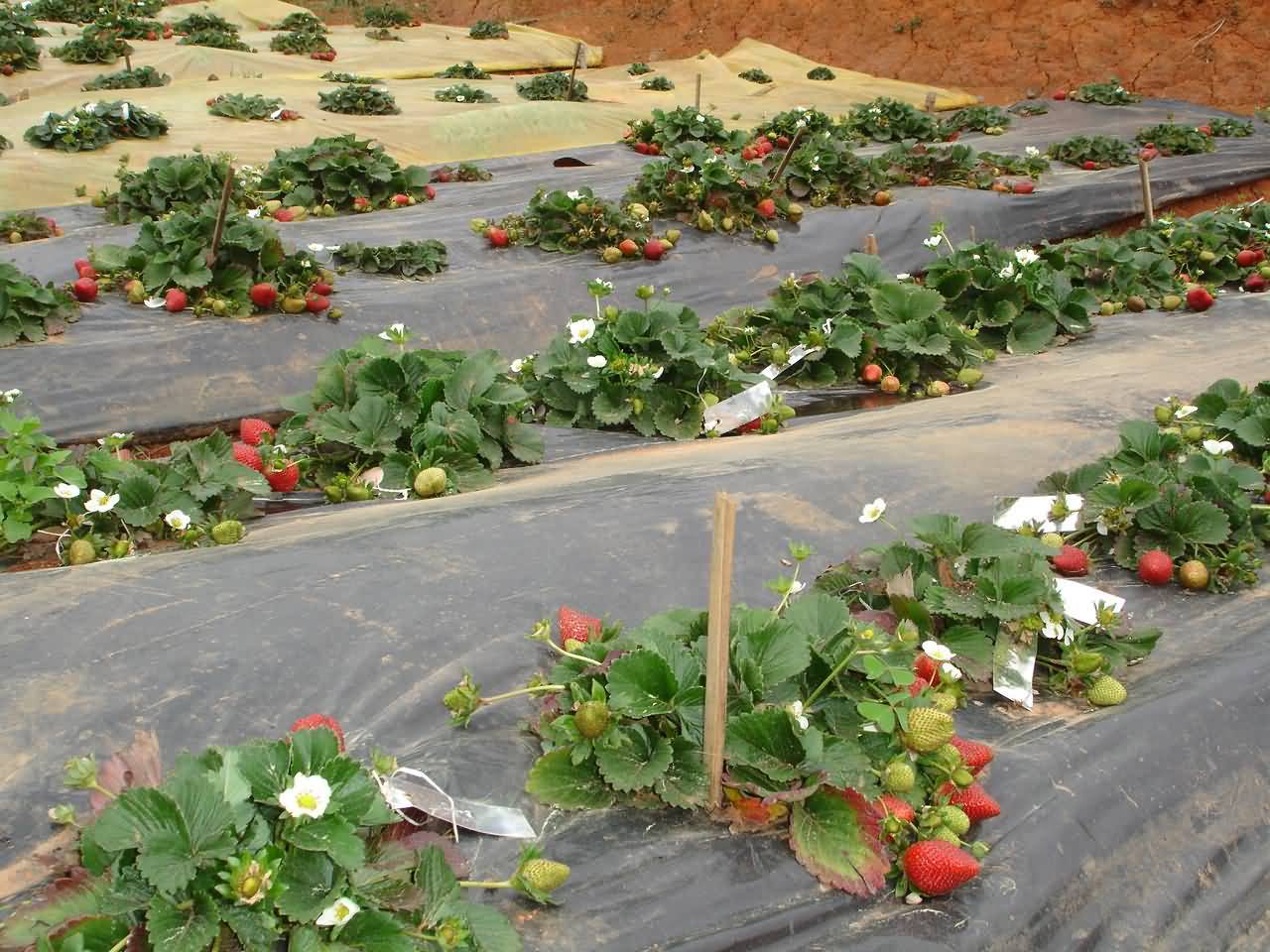 Mulching in Strawberry minimizes the freezing injury, suppresses weed growth and more importantly reduces the chances of softening of fruits. The commonly used mulching materials include clean straw, black and double coloured polythene. Mulching with black or double colour polythene material gives good weed control, advances early cropping and increases total yield.
Mulching in Strawberry minimizes the freezing injury, suppresses weed growth and more importantly reduces the chances of softening of fruits. The commonly used mulching materials include clean straw, black and double coloured polythene. Mulching with black or double colour polythene material gives good weed control, advances early cropping and increases total yield.
Where space is at a premium, strawberries will also grow well for a year or two in bags, troughs, pots and hanging baskets. This approach has several advantages over plants grown in the open. For pot culture of strawberry, soilless composts or those with low loam content, usually porous media is recommended. Soil: Sand: FYM in the ratio of 1:1:2 is considered as best potting media.
Freshly dug runners are planted from August to mid-October to allow proper establishment and a good crop in the first summer but for getting fruits other than normal season planting time can be manipulated accordingly because one can shift the bags/container in shade net or poly house whenever needed.
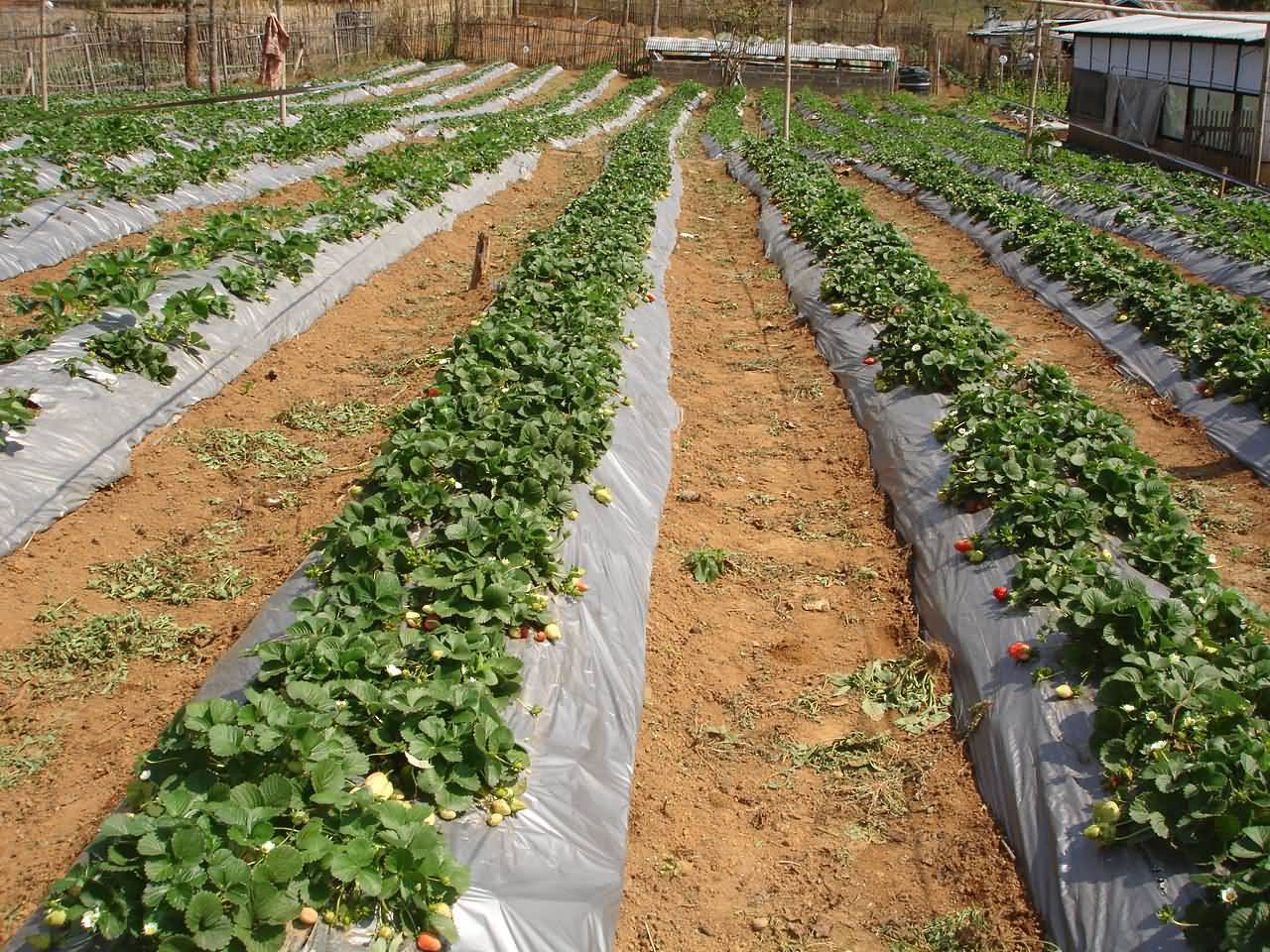
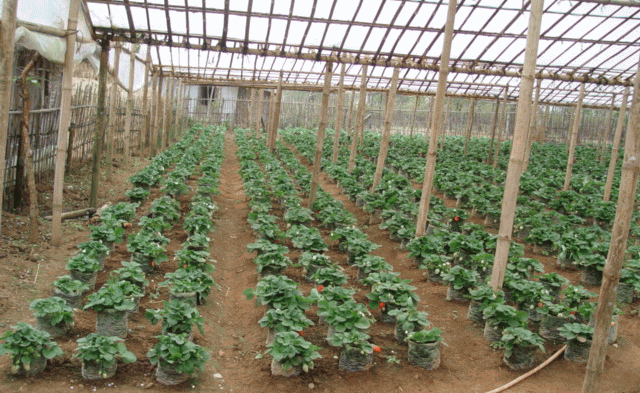
Different System of planting
Irrigation in Strawberry crop
Frequent irrigation rather than a few heavy ones favors the crop. Excess irrigation is detrimental in encouraging the growth of leaves and stolon at the expense of fruit and flower and increases the incidence of Botrytis rot and makes the fruit soft. To minimize the water requirement, sprinkler and trickle or drip irrigation may be resorted. Following points should be kept in mind while irrigating strawberry.
Nutrient management
A dressing of bulky organic manure is most wanted aspects in strawberry cultivation. Organic manures applied in sufficient quantity (70-80 t/ha) may fulfill the nutritional requirement, if planted for annual cropping. The pre-planting application of 20tonnes of FYM and 20-40-40 NPK kg/ha and annual application of 40kg P/ha and 80kg K/ha is recommended to ensure a good crop of strawberry. In addition to recommended dose of manures and fertilizers, foliar application of urea (2%), zinc sulphate (0.5%), calcium sulphate (0.5%) and boric acid (0.2%) is beneficial for quality and higher yield.
Pollination and fruit set in Strawberry
Most of the cultivars produce hermaphrodite flowers and are self fertile. However, some also produce male or staminate, imperfect and pistilate flower, which requires cross-pollination. Honeybees are the chief insect pollinators. Four strong honey- bees colonies should be placed in the field/ha for effective pollination. A typical inflorescence bears primary, secondary, tertiary and quaternary flowers Majority of fruits develops from tertiary flowers rather than from primary and secondary flowers.
Harvesting of strawberry and yield
Berries are harvested when 50 to 75 % skin of the berry develops colors. For long distance market, berries are harvested immediately after reaching full color. fruits are picked along with the caps or calyx and the stalk, one to two inches from the calyx. During peak period, fruits should be picked daily or in alternate day. On an average, the recommended varieties yield about 200-500 g/plant.
Packaging of Strawberry
Storage of fresh strawberry, even for short periods is not recommended because of their high perishability. Due to its climacteric nature, it ripens very fast and get spoiled easily. The strawberries are packed in plastic punnets and are placed in the corrugated fibre trays or ventilated cardboard boxes.
Plant protection in Strawberry
Strawberry plants are affected by a number of pests and diseases but the severity may vary according to locality.
White grubs and cut worms: Cut the root and stem of young plants that ca be control by deep ploughing and drenching the soil with chlorpyriphos @ 2ml/L water.
Root weevil:
Make deep tunnels in the crown base and finally the plants collapse. Control measure are application of Carbofuran (6-10 kg/ha) and Parathion (0.017 %) around the plants
Verticillium wilt:
The older leaves turn brown and shriveled, finally plants may die. The proper crop rotation besides soil fumigation with formalin (5000 L/ha) or chloropicrin (210 L/ha) are the precautionary measures.
Leaf spot complex:
Spot of different shapes and sizes appears on the leaves which may drying and defoliate. 2-3 sprays of hexaconazole (0.5 ml/ L water) or 5 sprays of carbendazim (0.5g/L water) at 21 days intervals can check the disease.
Authors:
Akath Singh, Bidyut C. Deka* and Pradeep Kumar
Central Arid Zone Research Institute, Jodhpur, Rajasthan
*ICAR Research Complex for NEH Region, Nagaland Centre
E-mail:
